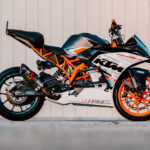The concept of electric bikes often comes with limitations, especially when considering speed and capability. While current e-bike technology serves a purpose, many envision a future where electric two-wheelers can offer more performance, bridging the gap between traditional bicycles and motorcycles. Imagine taking the core electric bike technology and integrating it into a robust frame equipped with high-performance brakes, potentially ABS, reliable tires, turn signals, and a sophisticated suspension system. Suddenly, the prospect of riding at traffic speeds becomes not just a dream, but a realistic and safer option.
This transition, however, inevitably leads to the question of categorization. At what point does an electric bike with enhanced capabilities become a motorcycle or scooter? The necessity for registration and insurance arises as speeds and potential risks increase. Current legal frameworks often categorize e-bikes based on power and speed restrictions, creating a divide. While these regulations aim to maintain the “bike” classification for lower-powered e-bikes, the desire for faster, more capable electric personal transportation persists.
Why should the pursuit of safety and higher speeds be mutually exclusive? Building an electric two-wheeler with the safest frame possible, incorporating motorcycle-grade components, and adhering to traffic regulations through registration and insurance shouldn’t negate its electric and potentially more sustainable nature. The success of electric motorcycle manufacturers like Zero Motorcycles demonstrates the market demand for electric two-wheeled vehicles. Perhaps the focus should shift towards creating a legal category for “light electric motorcycles” – vehicles that offer increased speed and safety features while retaining the benefits of electric propulsion.
The advancement of battery technology is making this segment increasingly viable. The cost curve of batteries is decreasing, making electric vehicles, especially in this lighter category, a compelling option for consumers. This could be the next significant area of growth in electric vehicles, potentially outpacing even established players in the traditional motorcycle market. While conventional e-bikes may have limitations in terms of speed and broader transportation needs, light electric motorcycles capable of reaching speeds like 50 mph could present a practical and exciting solution for urban and suburban commuting. A crucial feature for urban dwellers would be the ability to easily remove and charge the battery independently of the vehicle, addressing charging limitations in apartment buildings and similar environments.
Speed itself is undeniably appealing, but perceived risk is an inherent component. When considering an Electric Bike 50 Mph, the immediate reaction for many is to associate it with increased danger. Concerns about tire blowouts, unexpected traffic maneuvers, or road hazards naturally arise. However, with proper engineering, safety features, and responsible regulation, the perceived risk can be mitigated, paving the way for a new generation of electric two-wheelers that are both exhilarating and safe.


